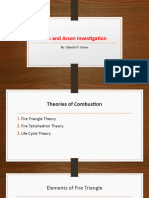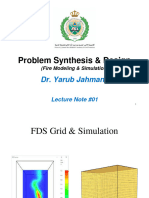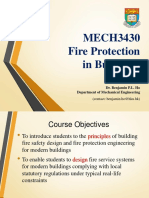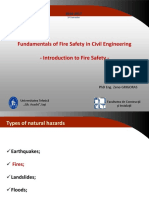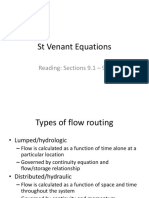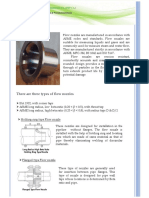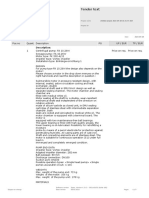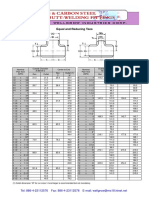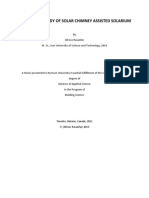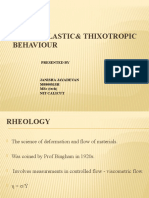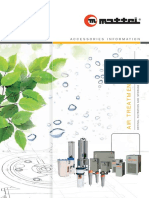0% found this document useful (0 votes)
36 views79 pagesMod 1
This document provides an overview of fire and combustion topics including:
- Definitions of key terms like temperature, heat, heating value, combustion, etc.
- Conditions required for fire - adequate fuel, oxygen and an ignition source or temperature above the autoignition point.
- Types of combustion like slow, rapid, explosion via deflagration or detonation.
- Products of combustion including flame, heat released depending on available fuel and oxygen, and smoke composition varying based on the fuel burned.
- Stages of fire - ignition, growth, and fully developed fire.
Uploaded by
mrinvictusthefirstCopyright
© © All Rights Reserved
We take content rights seriously. If you suspect this is your content, claim it here.
Available Formats
Download as PDF, TXT or read online on Scribd
0% found this document useful (0 votes)
36 views79 pagesMod 1
This document provides an overview of fire and combustion topics including:
- Definitions of key terms like temperature, heat, heating value, combustion, etc.
- Conditions required for fire - adequate fuel, oxygen and an ignition source or temperature above the autoignition point.
- Types of combustion like slow, rapid, explosion via deflagration or detonation.
- Products of combustion including flame, heat released depending on available fuel and oxygen, and smoke composition varying based on the fuel burned.
- Stages of fire - ignition, growth, and fully developed fire.
Uploaded by
mrinvictusthefirstCopyright
© © All Rights Reserved
We take content rights seriously. If you suspect this is your content, claim it here.
Available Formats
Download as PDF, TXT or read online on Scribd
/ 79










